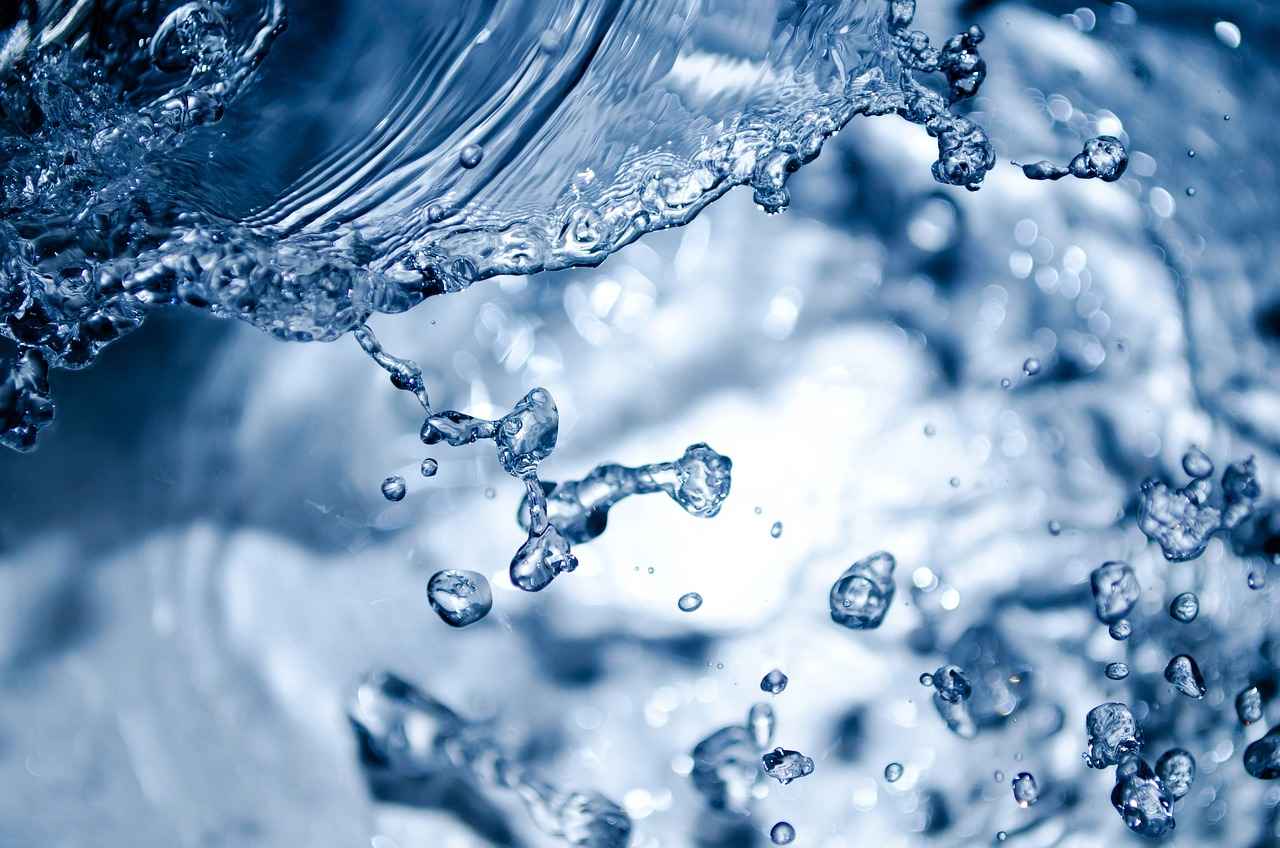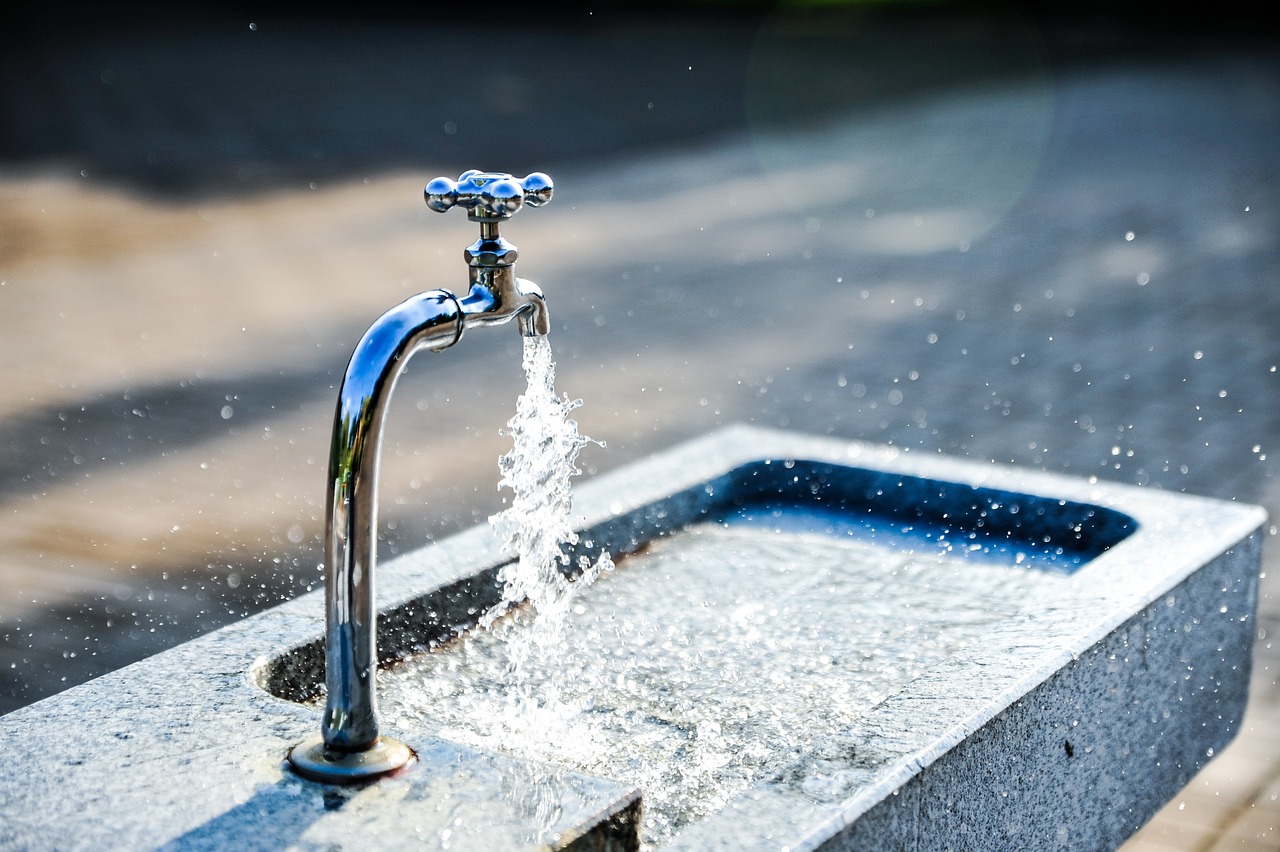This article provides essential insights on how to safely end a water fast, highlighting common pitfalls and offering practical advice for a smooth transition back to regular eating. Water fasting can be a powerful tool for detoxification and weight loss, but the way you break your fast is just as important as the fast itself.
Understanding the Basics of Water Fasting
Water fasting involves abstaining from all food and consuming only water for a specified period. This practice can lead to various benefits, including improved metabolism and enhanced mental clarity. However, understanding its principles is crucial for safely breaking the fast and avoiding adverse effects.
Why You Should Be Cautious When Breaking a Fast
Breaking a fast improperly can lead to digestive distress, nutrient deficiencies, and other health issues. It’s essential to be cautious to ensure a safe transition back to regular eating habits. Your body needs time to adjust after a period of fasting.
Signs That It’s Time to Break Your Fast
Recognizing the signs that indicate it’s time to end your water fast is essential. Common indicators include:
- Physical symptoms like dizziness or fatigue
- Heightened hunger signals
- Personal goals related to health and wellness
Common Mistakes When Ending a Water Fast
Many individuals make mistakes when breaking a fast, such as overeating or consuming the wrong foods. Awareness of these mistakes can help prevent discomfort and health issues.
Overeating After a Fast
One of the most common mistakes is overeating, which can overwhelm the digestive system. Gradually reintroducing food is crucial for a smooth transition back to normal eating. Start with small portions to gauge your body’s response.
Choosing the Wrong Foods
Opting for heavy or processed foods can lead to digestive distress. It’s important to select easily digestible foods that provide essential nutrients without causing discomfort. Focus on whole, natural options.
How to Gradually Reintroduce Foods
A gradual approach to reintroducing foods is vital for a successful transition. Here’s a step-by-step method for safely incorporating solid foods back into your diet:
Starting with Broths and Juices
Beginning with light broths or juices can help ease your digestive system back into processing solid foods. These options are gentle and provide hydration and nutrients without overwhelming your system.
Incorporating Soft Foods
After broths, introduce soft, whole foods like fruits and vegetables. These foods are nutrient-dense and easy on the stomach, promoting a healthy transition. Consider options like:
- Mashed bananas
- Steamed carrots
- Applesauce
Hydration: The Key to a Successful Transition
Maintaining hydration is crucial when breaking a fast. Drinking plenty of water supports the digestive process during refeeding. Aim to consume at least 8-10 glasses of water daily.
Listening to Your Body’s Signals
Paying attention to your body’s signals is essential during the refeeding phase. Recognize hunger cues and adjust food intake accordingly. If you feel full, stop eating, even if it’s less than you anticipated.
Consulting a Healthcare Professional
Before starting or breaking a water fast, consulting a healthcare professional is advisable. This ensures personalized guidance and helps mitigate potential health risks associated with fasting.
Long-Term Strategies for Healthy Eating After Fasting
Adopting long-term healthy eating strategies post-fast can enhance overall well-being. Focus on a balanced diet rich in whole foods, lean proteins, and healthy fats. Incorporating regular meals and snacks can help maintain energy levels and prevent binge eating.
In conclusion, breaking a water fast requires careful consideration and planning. By following these guidelines, you can ensure a smooth transition back to regular eating, maximizing the benefits of your fasting experience.

Understanding the Basics of Water Fasting
Understanding water fasting is essential for anyone considering this practice. Water fasting involves abstaining from all food and consuming only water for a set period, typically ranging from 24 hours to several days. This method has gained popularity for its potential health benefits, including detoxification, weight loss, and improved metabolic health. However, it is crucial to understand its principles to ensure a safe and effective fasting experience.
During a water fast, the body enters a state of ketosis after depleting its glycogen stores, where it begins to burn fat for energy. This metabolic shift can lead to various physiological changes, including a decrease in insulin levels and an increase in growth hormone production. While these changes can be beneficial, they also mean that the body is in a vulnerable state, making it vital to approach the end of the fast with caution.
One of the most significant risks associated with breaking a water fast improperly is digestive distress. After a prolonged period without food, the digestive system becomes less active, and suddenly reintroducing solid foods can overwhelm it. This can lead to symptoms such as bloating, nausea, and abdominal pain. Therefore, understanding how to safely break a fast is as important as the fasting process itself.
Recognizing the right time to break your fast is also essential. Common signs include feelings of extreme hunger, fatigue, or dizziness. Listening to your body is crucial, as it will provide cues that indicate when it’s time to reintroduce food. Ignoring these signals can lead to overeating or choosing inappropriate foods, both of which can hinder the benefits of fasting.
When it comes to breaking a water fast, common mistakes can have lasting effects on your health. Many individuals tend to overeat, thinking they need to compensate for the time spent fasting. This can lead to discomfort and digestive issues. Instead, it is advisable to gradually reintroduce food, starting with easily digestible options.
- Start with broths and juices: Light broths or diluted juices can help ease your digestive system back into processing solid foods. These options provide hydration and essential nutrients without overwhelming the stomach.
- Incorporate soft foods: After broths, consider introducing soft fruits and cooked vegetables. These foods are nutrient-dense and gentle on the digestive tract, promoting a smoother transition.
Staying hydrated is another key element when breaking a fast. Adequate water intake supports the digestive process and helps to flush out toxins that may have accumulated during fasting. Aim to drink plenty of water throughout the refeeding phase.
Moreover, it’s crucial to pay attention to your body’s signals during this transition. Recognizing hunger cues and responding appropriately can help you avoid the pitfalls of overeating or consuming the wrong types of food. If you experience any discomfort, it’s essential to adjust your food intake accordingly.
Consulting a healthcare professional before starting or breaking a water fast is advisable for personalized guidance. A professional can help you navigate potential health risks and tailor a fasting plan that aligns with your individual health needs.
Finally, adopting long-term healthy eating strategies after fasting can enhance your overall well-being. Focus on maintaining a balanced diet rich in whole foods, lean proteins, and healthy fats to sustain the benefits gained during the fasting period. Incorporating a variety of nutrients will not only support your health but also prevent the need for future fasting.
In summary, understanding the basics of water fasting and how to break it properly is crucial for maximizing its benefits while minimizing risks. By following a gradual refeeding process, staying hydrated, and listening to your body’s signals, you can ensure a smooth transition back to regular eating habits.

Why You Should Be Cautious When Breaking a Fast
Breaking a fast is a critical phase that requires careful attention and awareness. Improperly ending a fast can lead to a range of issues, including digestive distress, nutrient deficiencies, and other potential health complications. Understanding the importance of a cautious approach ensures a smoother transition back to regular eating habits.
When you fast, your body undergoes significant changes, adapting to a state of ketosis where it relies on stored fat for energy. This metabolic shift can make your digestive system sensitive when you reintroduce food. Therefore, it’s essential to recognize that the way you break your fast is just as important as the fast itself.
| Potential Issues from Improper Refeeding | Consequences |
|---|---|
| Digestive Distress | Stomach cramps, bloating, or diarrhea |
| Nutrient Deficiencies | Weakness, fatigue, and compromised immunity |
| Refeeding Syndrome | Severe electrolyte imbalances, which can be life-threatening |
One common mistake is overeating. After a prolonged period without food, the temptation to indulge can be overwhelming. However, this can overwhelm your digestive system, leading to discomfort and nausea. Instead, it’s advisable to start with small, easily digestible meals. Gradually increasing portion sizes will help your body readjust without causing distress.
Another pitfall is choosing the wrong foods. Heavy, greasy, or processed foods can be harsh on a sensitive stomach. Instead, focus on light options such as broths, juices, and soft fruits. These foods not only provide hydration but also contain essential nutrients that your body craves after fasting.
Staying hydrated is equally crucial during this phase. Water plays a vital role in the digestive process, helping to ease the transition back to solid foods. Aim to drink plenty of water while gradually reintroducing foods to ensure that your body remains adequately hydrated.
Listening to your body’s signals is paramount. Pay attention to hunger cues and fullness signals, as they can guide you in determining how much to eat. If you feel any discomfort, it’s essential to pause and reassess what you’re consuming. Your body is your best guide during this transition.
Before embarking on or breaking a fast, consulting with a healthcare professional is highly recommended. They can provide personalized advice tailored to your health needs and help mitigate potential risks associated with fasting.
In conclusion, breaking a fast requires careful consideration and a gradual approach to ensure a healthy transition back to regular eating. By avoiding common mistakes and listening to your body, you can enjoy the benefits of fasting without the associated risks. Remember, the goal is to nourish your body and support its recovery after a period of abstaining from food.

Signs That It’s Time to Break Your Fast
Recognizing the signs that indicate it’s time to end your water fast is essential for ensuring a safe and healthy transition back to regular eating. While fasting can provide numerous health benefits, it’s crucial to listen to your body and understand when it’s time to stop. Below are some common indicators that suggest it may be time to break your fast.
- Physical Symptoms: One of the most telling signs that you should end your fast is the emergence of physical symptoms. These can include dizziness, extreme fatigue, or persistent headaches. If you find yourself feeling weak or lightheaded, it may be your body’s way of signaling that it needs nourishment.
- Hunger Cues: Pay attention to your hunger signals. If you start to feel genuine hunger pangs rather than just cravings, it’s a clear indication that your body is ready for food. Ignoring these cues can lead to overeating later on.
- Emotional Well-Being: Fasting can affect your mood and emotional state. If you notice increased irritability or anxiety, it might be time to consider ending your fast. Your mental health is just as important as your physical health.
- Health Goals: Assess your personal health goals. If your aim was to detoxify or reset your eating habits, and you feel you have achieved that, it may be time to break your fast. Setting clear objectives can help you determine when to stop fasting.
- Duration of Fast: The length of your fast is also a critical factor. Extended fasts can lead to nutrient deficiencies and other health issues. If you have been fasting for an extended period, it’s wise to consider reintroducing food.
In addition to these signs, it’s important to consider how you feel overall. If you experience any concerning symptoms, it’s always best to consult a healthcare professional before making decisions about your fasting regimen. Listening to your body and recognizing these signs can help ensure a smoother transition back to regular eating habits.
When you decide to break your fast, remember to do so gradually. Start with light, easily digestible foods and listen to your body’s responses. This approach not only helps in avoiding digestive discomfort but also allows your body to adjust to the reintroduction of solid foods.
In summary, recognizing the signs that it’s time to end your water fast is crucial for your health and well-being. By being attentive to your body’s signals, you can make informed decisions that support your journey towards better health.

Common Mistakes When Ending a Water Fast
Breaking a water fast can be a delicate process, and many individuals inadvertently make critical mistakes that can lead to discomfort or health complications. Understanding these common pitfalls is essential for a smooth transition back to regular eating habits. Below are some of the most prevalent errors people make when ending a water fast.
One of the most frequent mistakes is overeating immediately after breaking a fast. After a period of abstaining from food, the digestive system may be sensitive and unprepared to handle large quantities of food. This can lead to bloating, nausea, and other gastrointestinal issues. It is advisable to start with small portions and gradually increase food intake. This allows the body to adjust and prevents overwhelming the digestive system.
Another common error is opting for heavy or processed foods right after a fast. Foods high in sugar, fat, or artificial ingredients can cause digestive distress and negate the benefits of fasting. Instead, focus on easily digestible foods such as fruits, vegetables, and whole grains. These options provide essential nutrients without putting too much strain on the digestive system.
Many individuals forget the importance of hydration when breaking a fast. Drinking plenty of water is crucial, as it aids digestion and helps the body process food more efficiently. Dehydration can lead to headaches, fatigue, and digestive issues. Incorporating hydrating foods, such as soups or broths, can also be beneficial during this transition.
Listening to your body is vital when reintroducing food. Many people ignore their hunger cues and eat out of habit rather than necessity. It’s essential to pay attention to how your body feels and adjust your food intake accordingly. If you feel full, stop eating, even if it’s tempting to consume more.
Jumping straight into a regular diet without a gradual reintroduction can lead to digestive complications. A structured approach is vital. Start with light foods, such as broths and juices, then slowly incorporate soft foods like mashed potatoes or steamed vegetables. This step-by-step method allows the digestive system to adapt appropriately.
Post-fast, some individuals may neglect the nutritional balance of their meals. It’s essential to ensure that the foods consumed are rich in vitamins, minerals, and other nutrients. A well-rounded diet will support overall health and recovery. Consider incorporating a variety of food groups to achieve this balance.
Before starting or breaking a water fast, it’s always wise to consult a healthcare professional. They can provide personalized advice based on your health history and goals. This step is crucial for avoiding potential health risks associated with fasting and ensuring a safe transition back to regular eating.
In summary, being aware of these common mistakes can significantly enhance your experience of breaking a water fast. By taking a cautious and informed approach, you can enjoy the benefits of fasting while minimizing any adverse effects. Remember to listen to your body, choose the right foods, and consult professionals when necessary for a successful transition back to your normal dietary habits.
Overeating After a Fast
is one of the most common mistakes individuals make when transitioning back to solid foods. After a period of fasting, the body has undergone significant changes, and its digestive system may be sensitive. This sensitivity makes it crucial to approach food reintroduction with care.
When breaking a fast, many people feel an overwhelming urge to eat large quantities of food, often due to feelings of hunger or the anticipation of enjoying meals again. However, overeating can lead to serious digestive distress, including bloating, nausea, and discomfort. The body, having adapted to a state of fasting, may struggle to process a sudden influx of food, leading to potential complications.
To avoid this pitfall, it is essential to gradually reintroduce food into your diet. Start with small portions and listen to your body’s signals. This approach allows the digestive system to adjust without being overloaded. Here are some practical steps to ensure a smoother transition:
- Begin with liquids: Start with clear broths or diluted juices. These options are gentle on the stomach and help to rehydrate the body.
- Incorporate soft foods: After a few hours, consider introducing soft foods such as mashed bananas or applesauce. These foods are easy to digest and provide essential nutrients.
- Progress slowly: Gradually add more complex foods like cooked vegetables or grains, but remain mindful of portion sizes.
- Stay hydrated: Continue to drink water throughout this process. Hydration is key to supporting digestion and overall well-being.
It is also important to pay attention to how your body reacts to different foods. Listening to your body’s signals can help you identify which foods are well-tolerated and which may cause discomfort. If you experience any adverse reactions, consider reverting to simpler foods until your digestive system stabilizes.
In addition, consulting with a healthcare professional can provide personalized advice tailored to your specific health needs. They can help you understand the best practices for breaking your fast and guide you on how to avoid common mistakes, including overeating.
Ultimately, the goal of breaking a fast is to nourish your body while respecting its current state. By taking a thoughtful and measured approach to reintroducing food, you can enhance your overall well-being and enjoy the benefits of fasting without the discomfort associated with overeating.
Choosing the Wrong Foods
Breaking a water fast is a delicate process that requires careful attention to the type of foods you choose to reintroduce into your diet. One of the most significant mistakes individuals make during this transition is . This can lead to various digestive issues and discomfort, which can derail the benefits gained from the fasting period.
When you opt for heavy or processed foods right after a fast, your digestive system may struggle to cope. These foods are often high in fats, sugars, and additives that can overwhelm your system, which has been resting and detoxifying. Instead of easing your body back into a normal eating pattern, these foods can cause bloating, gas, and even nausea.
To avoid these uncomfortable symptoms, it is essential to select easily digestible foods that provide the necessary nutrients without taxing your digestive system. Here are some recommendations:
- Broths and Clear Soups: Starting with light broths can help your body gradually adjust. Broths are rich in electrolytes and can provide hydration while being gentle on the stomach.
- Fresh Juices: Diluted fruit or vegetable juices can offer essential vitamins and minerals. They are easier to digest than whole fruits and can help stimulate your digestive tract.
- Soft Fruits: Fruits like bananas, applesauce, and ripe pears are not only easy to digest but also rich in fiber and nutrients that can aid digestion.
- Cooked Vegetables: Steamed or boiled vegetables, such as carrots, zucchini, and spinach, are gentle on the stomach and can provide valuable nutrients.
- Whole Grains: After a few days, you can start incorporating soft whole grains like oatmeal or quinoa, which are easier to digest compared to processed grains.
In addition to choosing the right foods, it’s crucial to pay attention to portion sizes. Overeating can occur if you feel overly hungry after fasting, but this can lead to discomfort. Start with small servings and gradually increase as your body adjusts.
Listening to your body’s signals is vital during this phase. If you experience any discomfort, it may be a sign that you are moving too quickly or consuming foods that are too heavy. Always prioritize hydration, as water plays a critical role in digestion and overall health.
Ultimately, the key to successfully breaking a water fast lies in making informed choices about the foods you consume. By prioritizing light, nutritious options and being mindful of your body’s responses, you can enjoy a smooth transition back to regular eating without the unpleasant side effects associated with poor food choices.

How to Gradually Reintroduce Foods
When it comes to breaking a water fast, a gradual approach to reintroducing foods is vital for a successful transition. This method not only helps your body adjust but also minimizes the risk of digestive discomfort. Below is a detailed step-by-step guide to safely incorporating solid foods back into your diet.
- Phase 1: Start with Liquids
Begin your refeeding process with light broths and natural juices. These options are gentle on the stomach and help to rehydrate your body. Consider vegetable broth or diluted fruit juices, as they provide essential nutrients without overwhelming your digestive system.
- Phase 2: Introduce Soft Foods
Once you’re comfortable with liquids, move on to soft foods such as mashed bananas, applesauce, or steamed zucchini. These foods are not only easy to digest but also packed with nutrients that aid recovery. Aim to eat in small portions to allow your body to adjust.
- Phase 3: Add Whole Foods Gradually
After a few days of consuming soft foods, start incorporating whole foods like cooked vegetables, grains (like rice or quinoa), and lean proteins (like chicken or fish). Ensure these are well-cooked and seasoned lightly to avoid any potential digestive upset.
- Phase 4: Monitor Your Body’s Response
It’s crucial to listen to your body during this process. Pay attention to any signs of discomfort or digestive issues. If you experience bloating or discomfort, consider reverting to softer foods for a while longer.
- Phase 5: Gradually Increase Portion Sizes
As your body adjusts, you can gradually increase portion sizes and variety in your meals. Aim to include a balanced mix of carbohydrates, proteins, and healthy fats to ensure you’re receiving adequate nutrition.
Throughout this entire process, it’s essential to stay hydrated. Drinking water consistently aids digestion and helps your body adapt to solid foods. Additionally, consulting with a healthcare professional can provide personalized guidance tailored to your specific needs and health conditions.
In conclusion, the key to successfully reintroducing foods after a water fast lies in a thoughtful and gradual approach. By following these outlined phases, you can minimize discomfort and promote a healthy transition back to regular eating habits. Always remember, patience is crucial during this process, and your body will thank you for it.
Starting with Broths and Juices
When ending a water fast, it is essential to reintroduce food gradually to avoid overwhelming your digestive system. One of the best ways to begin this process is by incorporating light broths or freshly squeezed juices into your diet. These options are not only gentle on the stomach but also provide necessary hydration and vital nutrients that your body craves after a fasting period.
Why Broths and Juices?
- Hydration: After a period of fasting, your body may be dehydrated. Broths and juices help replenish lost fluids, ensuring that your body is adequately hydrated.
- Nutrient-Rich: Both broths and juices are packed with vitamins and minerals, which can help restore your nutrient levels. They are also easier for your body to absorb compared to solid foods.
- Gentle on Digestion: These liquids are much easier for your digestive system to process. They allow your stomach to gradually acclimate to food intake without causing discomfort.
Starting with a warm broth made from vegetables or bone stock can be particularly beneficial. Such broths are rich in electrolytes and can help soothe the digestive tract. Additionally, they can be seasoned lightly with herbs to enhance flavor without overwhelming your system.
Juices: A Nutrient Powerhouse
Freshly squeezed juices, especially those made from cucumbers, celery, or carrots, can be an excellent choice as well. They provide a quick source of energy and are often low in calories, making them a perfect complement to light broths. When preparing juices, it is advisable to avoid adding too much sugar or heavy ingredients that could lead to digestive discomfort.
How to Incorporate Them
1. Start with a small serving of broth or juice (about 1/2 cup).2. Wait for at least 30 minutes to see how your body reacts.3. Gradually increase the quantity over the next few days if you feel comfortable.4. Listen to your body’s signals; if you experience any discomfort, reduce the intake and give your body more time.
As you begin to feel more comfortable with these liquids, you can start blending in more complex flavors or adding soft ingredients like pureed vegetables or smoothies to your regimen. This gradual reintroduction will help prepare your digestive system for more solid foods.
In summary, beginning your post-fast eating plan with light broths and juices is a strategic approach to ensure a smooth transition back to solid foods. By focusing on hydration and nutrient replenishment, you can support your body’s recovery and enhance your overall well-being.
Incorporating Soft Foods
After a period of water fasting, reintroducing solid foods into your diet requires careful consideration. One of the best ways to do this is by starting with soft, whole foods. These foods are not only nutrient-dense but also gentle on the digestive system, making them ideal for a smooth transition back to regular eating.
Soft foods include a variety of options such as:
- Fruits: Bananas, applesauce, and ripe avocados are excellent choices.
- Vegetables: Steamed carrots, zucchini, and sweet potatoes can be easily digested.
- Grains: Cooked oatmeal and rice are good sources of energy.
These foods provide essential vitamins and minerals that help replenish your body after fasting. Furthermore, they are easy to chew and swallow, minimizing the risk of digestive discomfort.
When incorporating these foods, it’s important to listen to your body. Start with small portions to gauge how your digestive system responds. If you experience any discomfort, it may be wise to slow down and allow your body more time to adjust. Gradually increasing portion sizes can help your body acclimate without overwhelming it.
Another benefit of soft foods is their hydration content. Many fruits and vegetables have high water content, which can help keep you hydrated during this transitional phase. This is particularly important as your body is still adjusting from the fasting state, where it relied solely on water.
In addition to hydration, soft foods can also provide a variety of flavors and textures that make the refeeding process enjoyable. Experimenting with different combinations can help you discover what works best for your taste buds while ensuring you are receiving a balanced intake of nutrients.
Moreover, incorporating soft foods can help stimulate digestive enzymes and prepare your gut for more complex foods in the future. This gradual approach is essential in preventing potential issues such as bloating or discomfort that can arise from consuming heavy or processed foods too soon.
In summary, after consuming broths or juices, moving on to soft, whole foods like fruits and vegetables is a crucial step in breaking a water fast. These foods are not only easy on the stomach but also packed with nutrients, aiding in a healthy and balanced transition back to regular eating habits. Always remember to listen to your body and adjust your intake accordingly, ensuring a smooth and successful refeeding experience.

Hydration: The Key to a Successful Transition
When breaking a fast, maintaining proper hydration is not just beneficial; it is essential. Water plays a pivotal role in the body’s physiological processes, especially during the refeeding phase after a period of fasting. This section explores the significance of water intake and how it aids the digestive system as you transition back to regular eating.
During a water fast, your body undergoes various metabolic changes. As you prepare to break your fast, it is crucial to understand that hydration supports optimal digestive function. Water helps to stimulate the digestive tract, ensuring that your body can effectively process the nutrients from the foods you reintroduce. Without adequate hydration, you may experience discomfort, bloating, or other digestive issues.
- Hydration Aids Digestion: Water is vital for the production of digestive juices and enzymes, which are necessary for breaking down food. Proper hydration ensures these processes function smoothly, reducing the risk of gastrointestinal distress.
- Flushes Out Toxins: After fasting, your body may have accumulated waste products. Drinking water assists in flushing out these toxins, promoting a healthier digestive system and overall well-being.
- Prevents Dehydration: As you begin to eat again, especially if you start with solid foods, your body needs sufficient water to help digest and absorb these nutrients effectively. Dehydration can lead to fatigue and hinder the refeeding process.
To ensure you are adequately hydrated, consider the following practical tips:
1. Start your day with a glass of water upon breaking your fast.2. Gradually increase your water intake throughout the day.3. Incorporate hydrating foods such as fruits and vegetables into your meals.4. Monitor your body's signals for thirst and adjust your intake accordingly.
It is also advisable to choose water-rich beverages like herbal teas or broths, as they can provide additional nutrients while keeping you hydrated. Avoid sugary drinks and caffeine, as these can lead to dehydration and discomfort.
In conclusion, prioritizing hydration is a fundamental aspect of successfully transitioning out of a fast. By understanding the role of water in digestion and overall health, you can facilitate a smoother refeeding process and enhance your well-being. Remember, listening to your body is key; if you feel thirsty, respond promptly to maintain your hydration levels.

Listening to Your Body’s Signals
Listening to your body’s signals is a critical component of the refeeding phase following a water fast. As you transition back to regular eating, it’s vital to recognize hunger cues and adjust your food intake accordingly. This section will delve into the importance of being attuned to your body and how doing so can facilitate a smoother reintroduction of food.
During the refeeding phase, your body may exhibit various signals that indicate its readiness for food. These signals can range from physical sensations, such as stomach growling, to emotional cues like cravings for specific foods. Understanding these signals can help you make informed decisions about when and what to eat.
One of the most important aspects of listening to your body is recognizing hunger cues. Rather than adhering to a strict meal schedule, pay attention to your body’s natural rhythms. For instance, if you feel a gentle pang of hunger, it may be your body signaling that it’s time to eat. Conversely, if you feel uncomfortably full or bloated, it may indicate that you’ve consumed too much or too quickly.
Another crucial factor is to be mindful of emotional eating. After a period of fasting, some individuals might experience heightened emotions or cravings. It’s essential to differentiate between physical hunger and emotional urges. Engaging in mindful eating practices, such as taking a moment to assess your feelings before reaching for food, can help you respond appropriately.
To facilitate a successful refeeding experience, consider the following practical tips:
- Start Slow: Begin with small portions to avoid overwhelming your digestive system.
- Stay Hydrated: Continue to drink water to support digestion and overall health.
- Choose Nutrient-Dense Foods: Opt for whole, easily digestible foods that provide essential nutrients.
- Monitor Your Body’s Response: Keep track of how different foods make you feel and adjust your intake accordingly.
In addition to physical hunger cues, it is also important to be aware of your body’s energy levels. After a fast, you may feel a surge of energy or, conversely, fatigue. Listening to these energy signals can guide your food choices; for example, if you’re feeling low on energy, consuming complex carbohydrates and proteins can help replenish your energy stores.
Moreover, the refeeding phase can also be a time for reflection. Take this opportunity to assess your relationship with food. Are you eating merely out of habit, or are you truly hungry? This self-reflection can lead to healthier eating habits long-term, helping you establish a balanced diet that aligns with your body’s needs.
In conclusion, paying attention to your body’s signals during the refeeding phase is not just about managing hunger; it’s about fostering a healthier relationship with food. By recognizing and responding to your body’s cues, you can create a tailored approach to eating that promotes both physical and emotional well-being. Remember, the journey of refeeding is just as important as the fast itself, and being in tune with your body is the key to success.

Consulting a Healthcare Professional
When considering a water fast, the importance of cannot be overstated. Engaging with a qualified expert ensures that you receive tailored advice that aligns with your unique health profile and fasting goals.
Water fasting, while beneficial for some, can pose health risks for others, particularly those with pre-existing conditions or those taking medications. A healthcare provider can conduct a thorough assessment, evaluating your medical history and current health status, which is crucial in determining whether fasting is a safe option for you.
Moreover, a healthcare professional can provide personalized guidance on how to approach the fast, including:
- The ideal duration for your fast based on your health goals.
- How to prepare your body before beginning the fast.
- Strategies for safely breaking the fast to avoid digestive distress.
By working closely with a healthcare provider, you can also gain insights into monitoring your body’s reactions during the fast. This is particularly important, as individuals may experience varying symptoms, from mild hunger pangs to more severe reactions such as dizziness or fatigue. Having a professional guide can help you navigate these challenges effectively.
In addition to physical health considerations, mental health is also a critical aspect of fasting. A healthcare professional can help you understand the psychological implications of fasting, ensuring that you approach it with a balanced mindset. This support can help mitigate feelings of anxiety or stress that may arise during the fasting period.
Furthermore, it is essential to recognize that fasting is not a one-size-fits-all approach. Different individuals may respond differently to fasting based on factors such as age, gender, metabolic rate, and overall lifestyle. A healthcare provider can help you tailor your fasting regimen, ensuring that it aligns with your health objectives while minimizing potential risks.
Finally, consulting a healthcare professional can also provide you with a framework for post-fasting nutrition. After a water fast, your body requires careful reintroduction of foods to prevent digestive issues. A professional can offer valuable advice on what to eat and when, ensuring a smooth transition back to regular eating habits.
In conclusion, before embarking on a water fast, it is highly advisable to seek the counsel of a healthcare professional. This step not only enhances your safety but also maximizes the potential benefits of fasting. By receiving personalized guidance, you can approach your fasting journey with confidence, ensuring that it is both effective and health-conscious.

Long-Term Strategies for Healthy Eating After Fasting
After completing a water fast, it is crucial to adopt long-term healthy eating strategies to maximize the benefits of your fasting experience. Transitioning back to regular eating habits can be challenging, but with the right approach, you can enhance your overall well-being and maintain the health gains achieved during the fast.
Proper nutrition after fasting is essential for restoring energy levels and ensuring that your body receives the nutrients it needs to function optimally. A well-balanced diet can help in replenishing lost nutrients and supporting your metabolic processes.
- Incorporate Whole Foods: Focus on whole, unprocessed foods such as fruits, vegetables, whole grains, lean proteins, and healthy fats. These foods are nutrient-dense and can help restore your body’s nutrient levels.
- Prioritize Plant-Based Options: Including a variety of plant-based foods can provide essential vitamins, minerals, and antioxidants that aid recovery and promote overall health.
- Stay Hydrated: Continue to drink plenty of water to maintain hydration. Herbal teas and infused waters can also be beneficial.
Adopting mindful eating practices can significantly improve your relationship with food. Here are some tips:
- Listen to Your Body: Pay attention to hunger and fullness cues. Avoid eating out of habit or boredom.
- Eat Slowly: Take your time during meals to savor your food. This can help you enjoy your meals more and prevent overeating.
- Limit Distractions: Try to eat without distractions such as television or smartphones to foster a more conscious eating experience.
Planning your meals in advance can help you stay on track with your dietary goals. Consider the following:
- Weekly Meal Prep: Dedicate time each week to prepare healthy meals. This can save time and reduce the temptation to opt for unhealthy convenience foods.
- Balanced Portions: Use portion control to avoid overeating. Aim for a balanced plate that includes a variety of food groups.
- Healthy Snacks: Keep healthy snacks on hand, such as nuts, yogurt, or cut-up vegetables, to curb hunger between meals.
Regular physical activity complements a healthy diet and enhances overall well-being. Consider integrating:
- Cardiovascular Exercise: Activities like walking, jogging, or cycling can improve heart health and boost metabolism.
- Strength Training: Building muscle mass can aid in weight management and improve body composition.
- Flexibility and Balance Exercises: Practices such as yoga or Pilates can enhance flexibility and reduce stress.
If you are unsure about how to proceed with your post-fast eating plan, consider consulting a registered dietitian or nutritionist. They can provide personalized advice based on your individual needs and health goals.
By adopting these long-term healthy eating strategies, you can significantly enhance your health and well-being after fasting. Remember that the journey to better health is a gradual process, so be patient and consistent with your efforts.
Frequently Asked Questions
- What is a water fast?
A water fast is a type of fasting where you abstain from all food and consume only water for a certain period. It’s often used for detoxification or health benefits.
- Why is it important to break a water fast properly?
Breaking a water fast improperly can lead to digestive issues, nutrient deficiencies, and other health risks. Proper refeeding ensures a smooth transition back to regular eating.
- What are the signs that indicate it’s time to end a water fast?
Common signs include feeling light-headed, extreme hunger, or physical fatigue. It’s essential to listen to your body and recognize when it’s time to break the fast.
- What are the common mistakes people make when ending a water fast?
Many people tend to overeat or choose heavy, processed foods, which can overwhelm the digestive system. It’s crucial to reintroduce food gradually and select easily digestible options.
- How should I start reintroducing food after a fast?
Begin with light broths or juices to ease your digestive system back into processing solid foods. Afterward, you can incorporate soft, whole foods like fruits and vegetables.
- How important is hydration when breaking a fast?
Hydration is key! Drinking water helps support your digestive process and ensures your body is ready to handle solid foods again.
- Should I consult a healthcare professional before fasting?
Yes! Consulting a healthcare professional can provide personalized guidance and help mitigate potential health risks associated with fasting.












